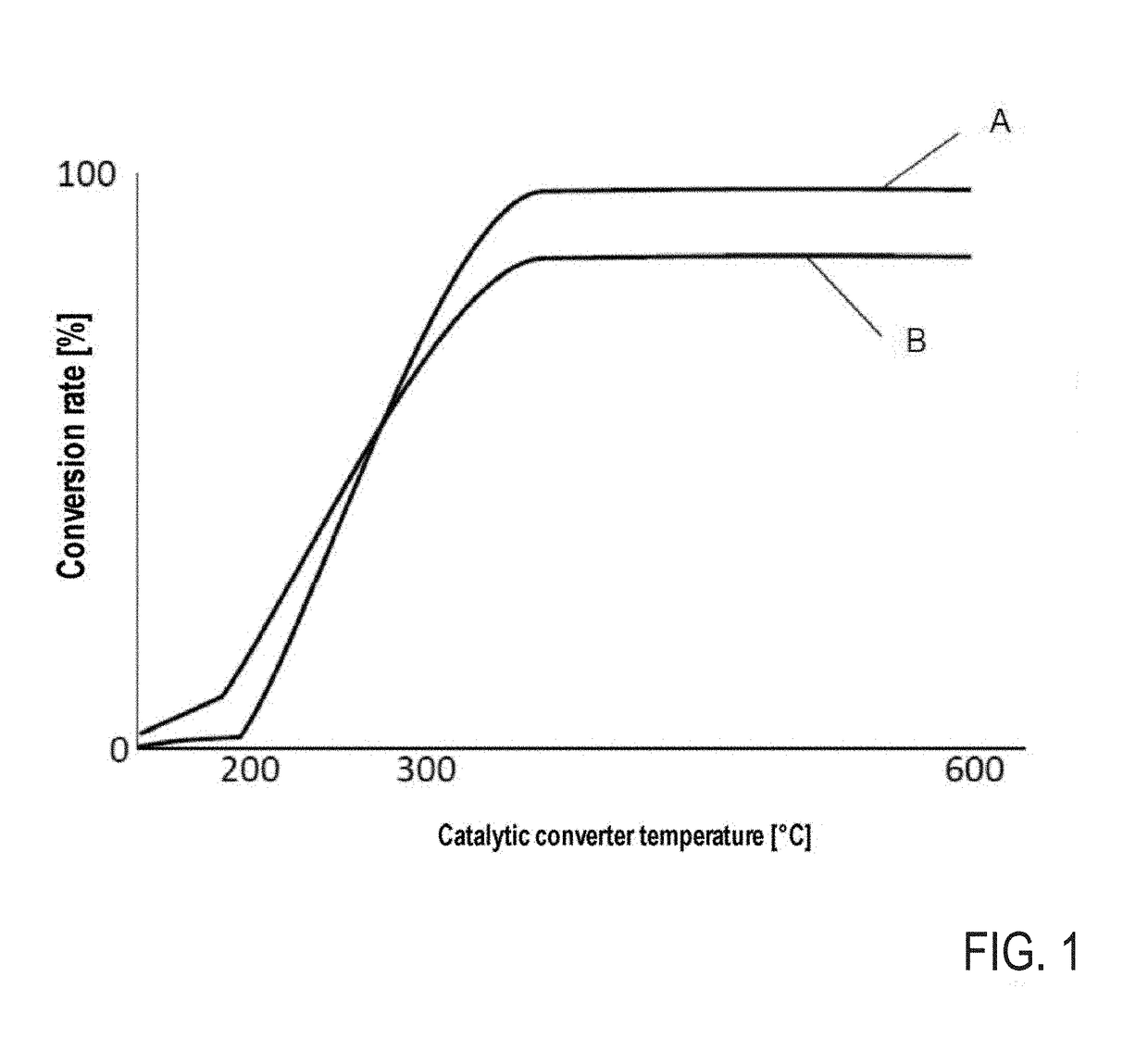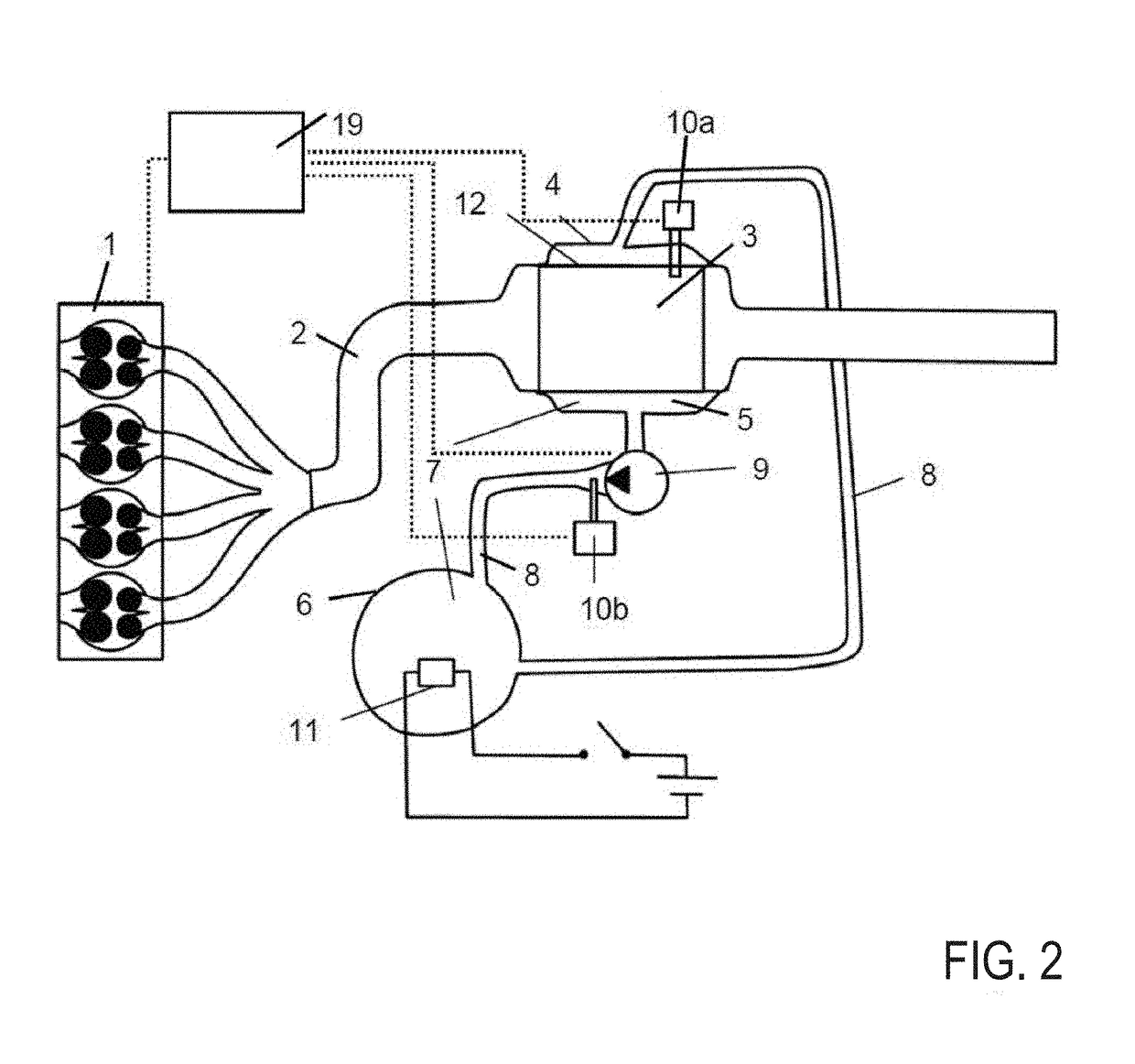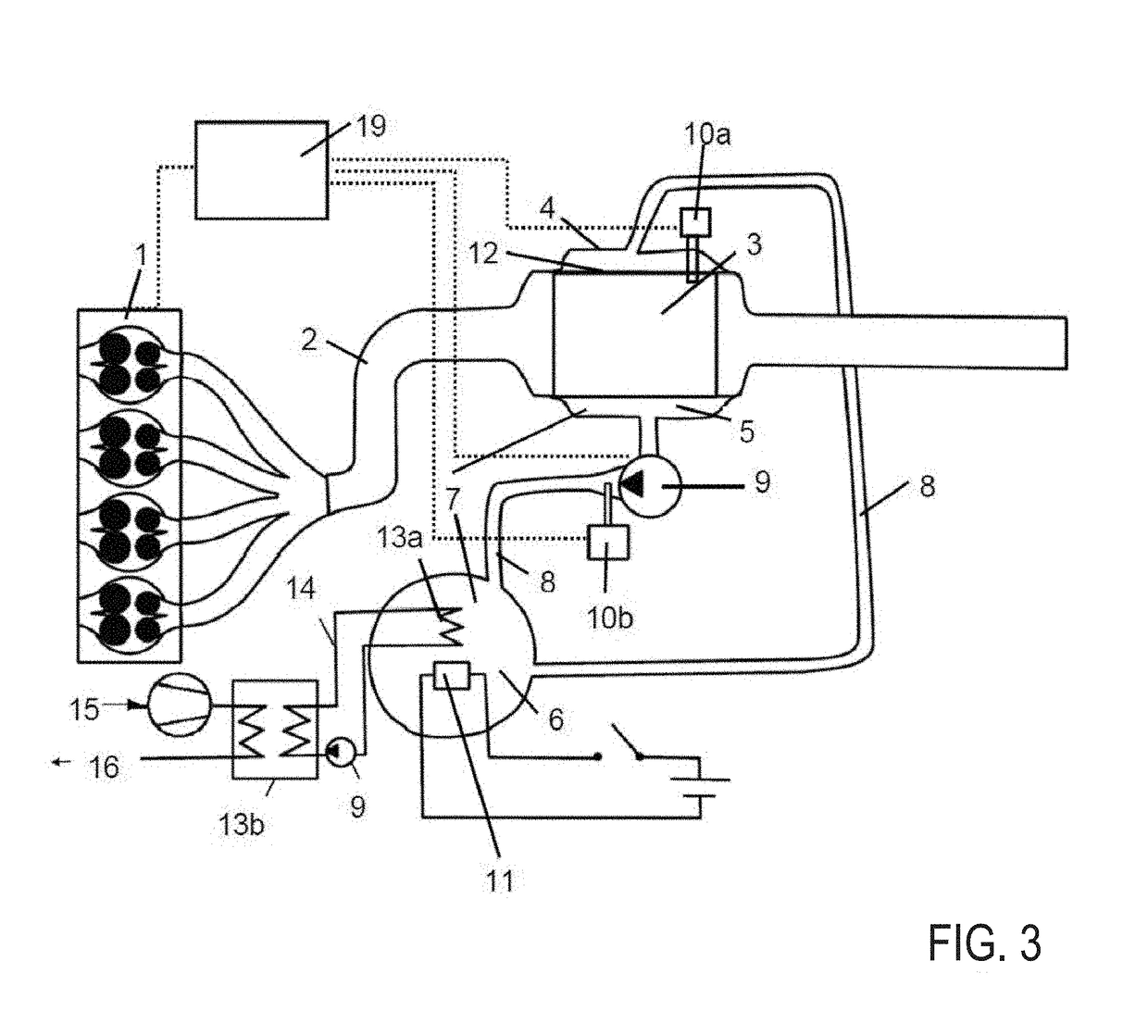Method and system for exhaust-gas heat management
a heat management and exhaust gas technology, applied in the direction of exhaust treatment electric control, machines/engines, separation processes, etc., can solve the problems of insufficient catalytic activity, inability to adhere to exhaust-gas limit values, and insufficient rate of catalytic conversion of pollutants to be treated, so as to reduce the emission of air pollutants, increase the range of electric vehicles, and avoid the effect of reducing the charge state of batteries
- Summary
- Abstract
- Description
- Claims
- Application Information
AI Technical Summary
Benefits of technology
Problems solved by technology
Method used
Image
Examples
Embodiment Construction
[0082]FIG. 1 shows the dependence of the conversion rate for nitrogen oxides and hydrocarbons (curve A) and carbon monoxide (curve B) on the catalytic converter temperature. It is only at a temperature of approximately 250° C. to 300° C. that the light-off temperature is attained, i.e. the conversion rate is 50%. For an effective catalytic treatment of exhaust gas, the catalytic converter temperature should therefore be above this light-off temperature. The method according to the invention and the exhaust-gas heat management system according to the invention enable this to be achieved for as a long a time period as possible, and thus to reduce the emission of air pollutants.
[0083]Shown schematically in FIG. 2 is an exhaust-gas heat management system that may be used, for example, for executing the method according to the invention. The internal combustion engine has an internal combustion engine 1, having an exhaust-gas train 2 adjoining the latter. In the exemplary embodiment, the...
PUM
 Login to View More
Login to View More Abstract
Description
Claims
Application Information
 Login to View More
Login to View More - R&D
- Intellectual Property
- Life Sciences
- Materials
- Tech Scout
- Unparalleled Data Quality
- Higher Quality Content
- 60% Fewer Hallucinations
Browse by: Latest US Patents, China's latest patents, Technical Efficacy Thesaurus, Application Domain, Technology Topic, Popular Technical Reports.
© 2025 PatSnap. All rights reserved.Legal|Privacy policy|Modern Slavery Act Transparency Statement|Sitemap|About US| Contact US: help@patsnap.com



